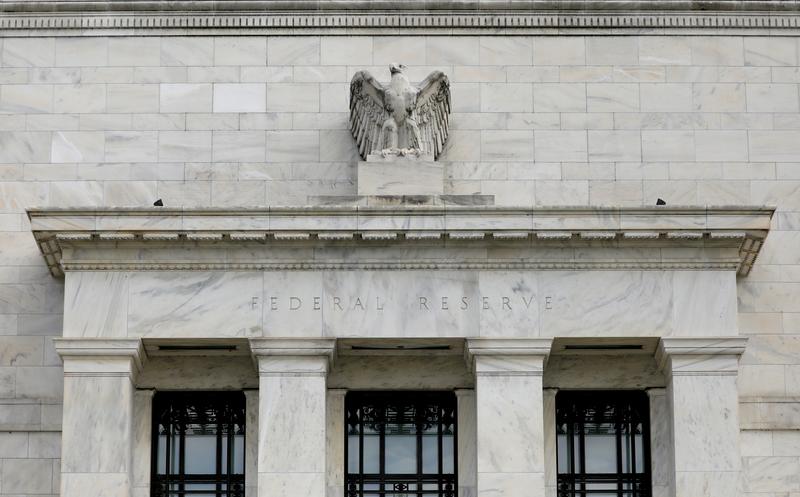(Reuters) -The Federal Reserve announced on Wednesday it will establish separate domestic and international standing repo facilities to backstop money markets during times of stress.
The domestic standing repo facility, or SRF, will conduct daily overnight repo operations against Treasury securities, agency debt securities and agency mortgage-backed securities.
Through the facility for foreign and international monetary authorities, known as the FIMA repo facility, the U.S. central bank will enter into overnight repo agreements as needed with foreign official institutions against their holdings of Treasury securities held at the New York Fed.
“These facilities will serve as backstops in money markets to support the effective implementation of monetary policy and smooth market functioning,” the Fed said in a statement after the end of its latest two-day policy meeting.
Fed officials held detailed discussions at their June 15-16 policy meeting about how these programs might be designed, according to minutes from that meeting.
The Fed began intervening in money markets in September of 2019 when reserves in the banking system fell too low, leading to a spike in short-term borrowing rates. The central bank also increased its repo offerings in March of 2020 after the coronavirus pandemic led to a rush for cash.
Setting up permanent repo facilities may lessen the need for the Fed to be reactive when liquidity is low. The minimum rate under the facility will initially be set at 0.25%, the top of the Fed’s target range.
The domestic standing repo facility will initially be open to primary dealers, a list of two dozen financial institutions that are trading counterparties with the New York Fed. It will later be expanded over time to include additional depository institutions, the Fed said in its statement here.
The program will run similar to the daily repo operations the Fed offers now, but those offerings have seen little uptake over the past year as financial firms struggle with the opposite problem – too much cash in the banking system.
“We would not expect any substantive demand for this facility in the near term or outside of times of stress,” Jerome Schneider, head of short term portfolio management and funding at PIMCO, said in an email.
Reserves are elevated thanks in part to the Fed’s asset purchases, a drop in Treasury bill issuance and a rapid drawdown in the government’s store of funds at the Fed.
Money market funds and other eligible firms are instead increasingly turning to the New York Fed’s overnight reverse repo facility, which gives them a place to park extra cash overnight in exchange for a return.
Demand for the reverse repo program rose further after mid-June, when the Fed increased the rate it pays on those operations to 0.05% from zero. Firms parked $965 billion with the Fed on Wednesday.
Fed Chair Jerome Powell said that he is not concerned about the increased uptake of the reverse repo program. “We think it’s doing what it’s supposed to do, what we expect of it to do,” Powell said, “which is to help provide a floor for money market rates and help ensure that the federal funds rate stays within the target range.”
Source: Read Full Article
